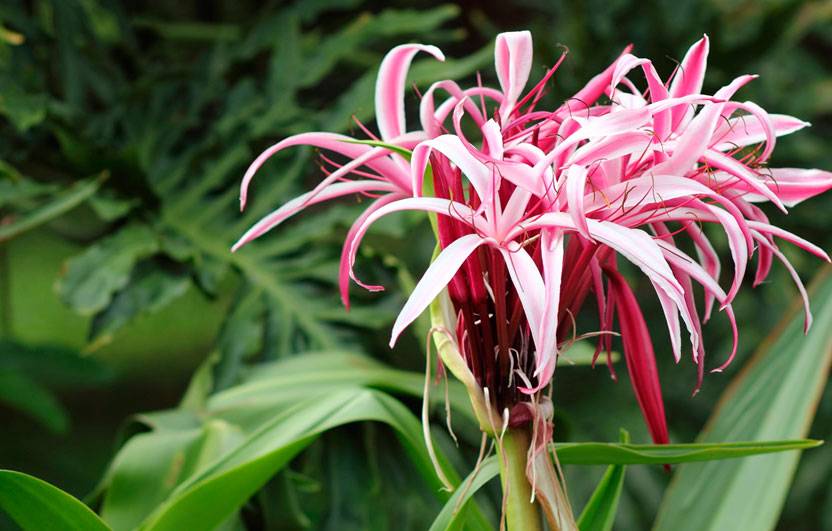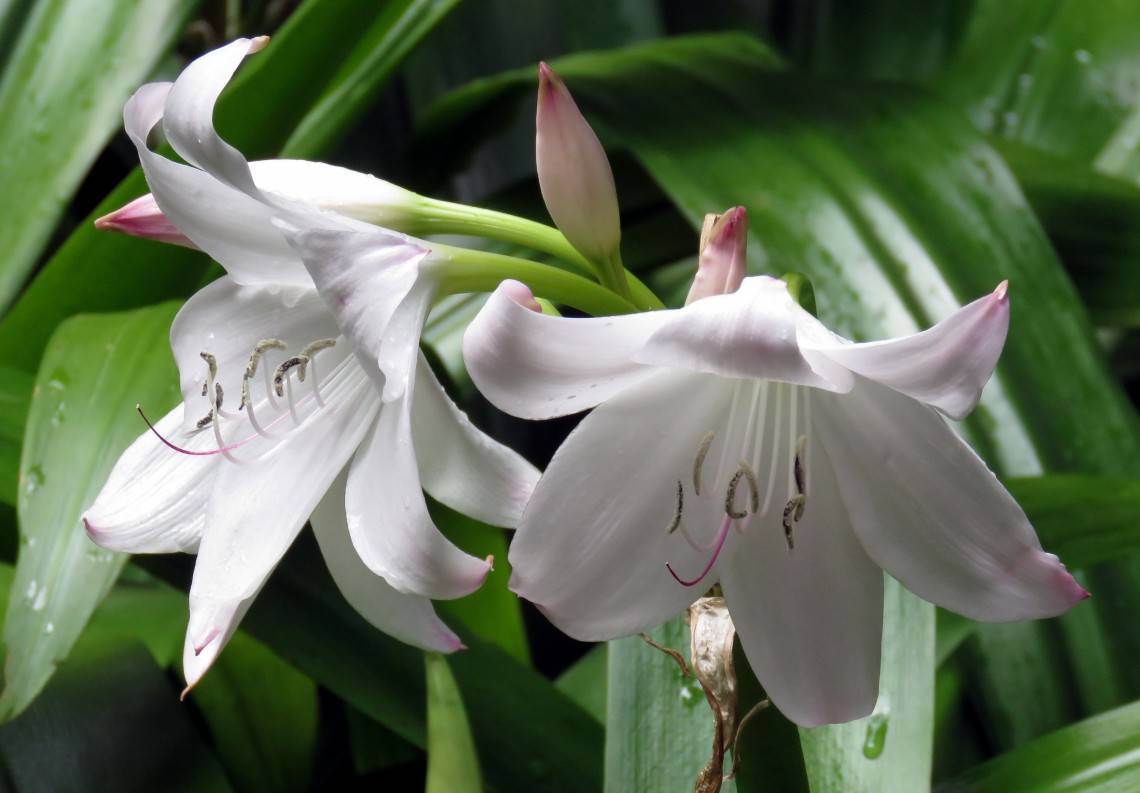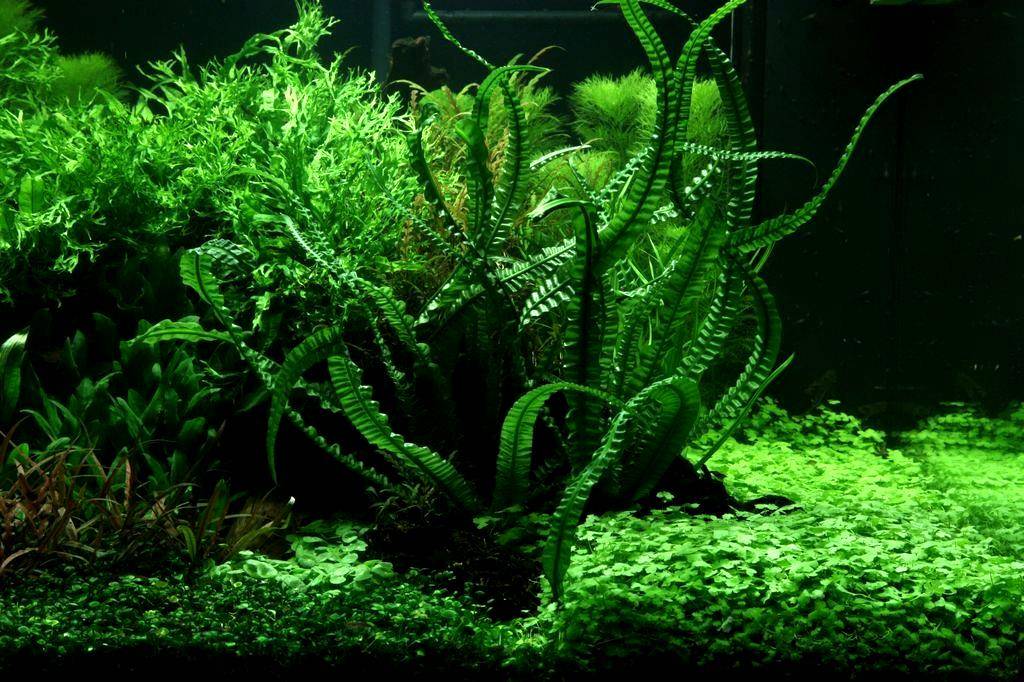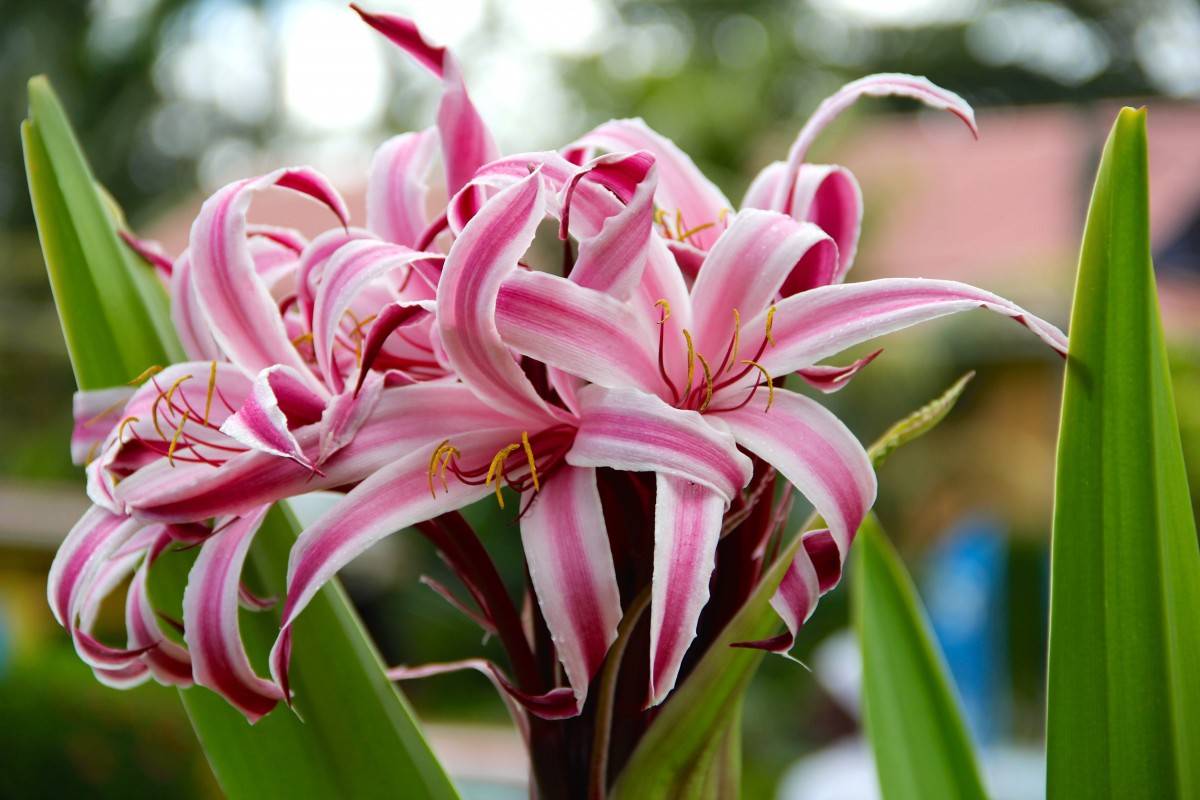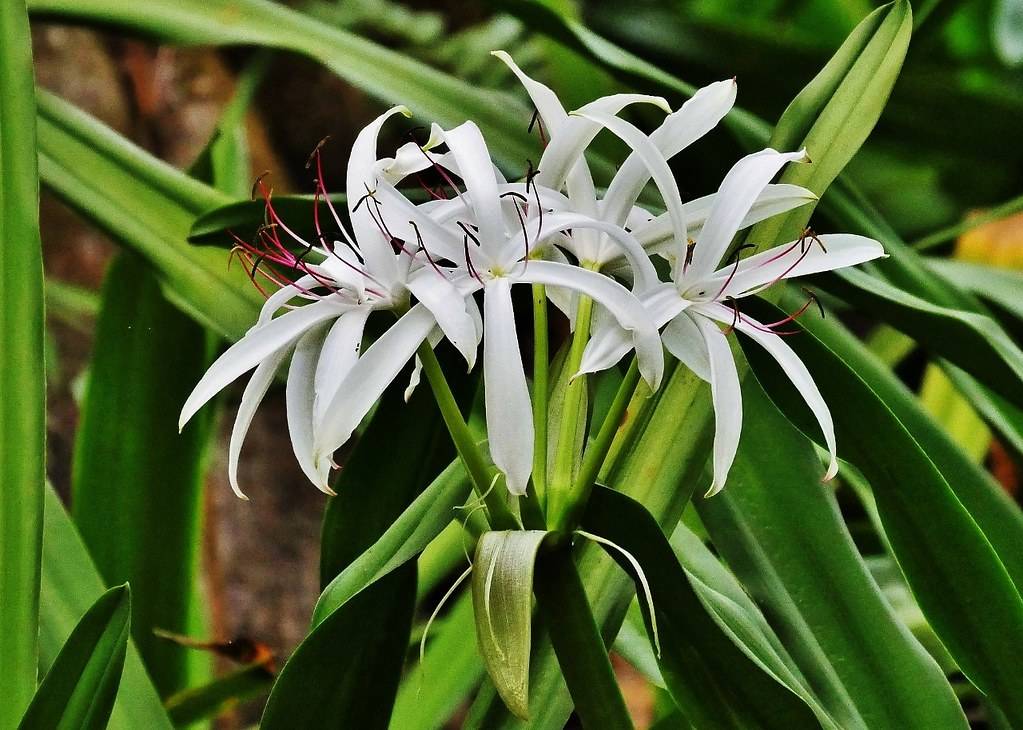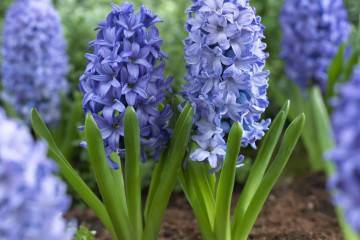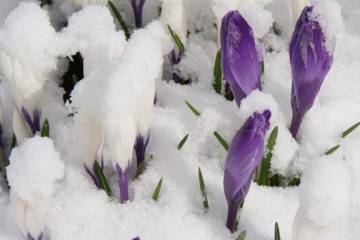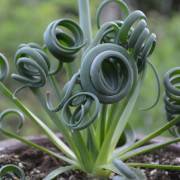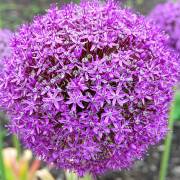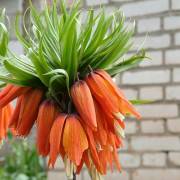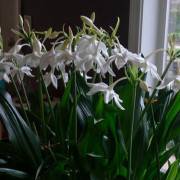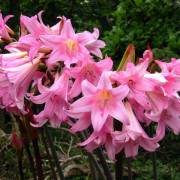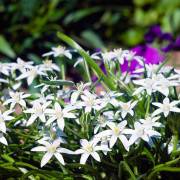Krinum - garden flower, planting and care in the open field
Content:
Krinum is a flower that amazes with its beauty and showiness: its flowers are large enough, but at the same time very delicate and graceful, the leaves are long. Krinum gives the impression of a capricious exotic, but in fact this plant is quite unpretentious and hardy, capable of growing even in drought.
Popular varieties of crinum - garden flower
Crinum is a bulbous plant from the Amaryllis family. In the wild, it is found in the tropics and subtropics. Prefers floodplains of rivers, the shores of lakes and seas. He also feels good in garden plots or in houses.
All subspecies of krinum are quite similar in appearance. The difference can be noticed during the flowering period - there are some structural features, colors of buds and flowers. The leaves of the krinum are flattened, rolled into thin tubes. In some specimens, the size of the bulb can reach a diameter of 25 centimeters! Thin peduncles with umbrella-shaped flowers extend from the root.
Wavy krinum
This variety belongs to the aquatic species: krinum grows completely in water. The bulb is poorly developed, its diameter rarely exceeds three centimeters. The leaves of the plant are rather long and elongated, and have a dark green color.
The name wavy krinum received due to the peculiarities of the structure of the edges of the leaves. By the way, this particular plant is often used as a decoration for aquariums.
Crinum Moore
It is the most common species and is usually grown indoors. The length of the leaves can reach 60-90 centimeters, and their width is about ten cm. The bulb is large, a large number of children depart from it, with which the plant can be propagated. During the flowering period, about 12-15 pink flowers are formed on the plant.
Crinum Powell
Florists can plant an amazing plant thanks to the labors of breeders who crossed Moore's crinum with bulbous seeds. The diameter of the Powell krinum bulb is 15-20 centimeters, the height of the plant itself can reach 70 centimeters. The peduncle is leafless, the inflorescence consists of several bright pink fragrant flowers.
Krinum Kalamistratum
Calamistratum is an aquarium variety of wavy krinum. It must be kept in water. The bulb of the plant is poorly developed, its diameter does not exceed five centimeters. The leaves of the krinum Kalamistratum are long (up to half a meter) and thin, have a rich dark green tone, the edges are jagged.
Asian crinum
The homeland of this amazing plant is stagnant reservoirs located in western tropical Africa. The plant is quite large - the length of the leaves reaches 120 centimeters, and the diameter of the bulb is 15 centimeters. Peduncles of Asian krinum are long and thin, their tops are decorated with white umbellate inflorescences. Each inflorescence consists of 15-20 flowers.
Crinum American
The height of this plant reaches one and a half meters, the bulb is large enough - up to 30 centimeters in diameter, and its base goes to a depth of about 50 centimeters. The leaves of the American krinum have a dark green hue, they are elongated and straight. Bare peduncles are decorated with 12-15 small flowers of light or bright pink hue.
Floating krinum
Outwardly, the floating krinum looks like a wavy one. The plant is ideal for growing in an aquarium. It should be noted that in the wild, the plant is quite large - the length of the leaves can reach a meter with a width of five centimeters, but in a limited space the flower will be much smaller.
Outdoor planting recommendations
Krinum garden is intended for growing in the open field. Before planting it on the site, it is necessary to study all the features of the plant, the rules for caring for it. And, of course, it is worth creating the optimal conditions for the flower to grow.
Since the flower is tropical, it will need sand or river silt to grow it; it will grow poorly in normal (even nutritious) soil. The place must be protected from drafts and wind, it is important that it is well lit.
Another important detail: planting garden krinum in open ground and caring for it can begin from the end of April in the southern regions. The fact is that the plant is thermophilic. To begin with, you should grow a seedling in a container or pot - and only then transplant it to a permanent place in the open field.
It is not difficult to prepare a seedling: you need to choose a suitable container, soil and onion. It is recommended to plant the bulb in a pot in early spring, so by the end of April the plant will already have leaves and flower stalks. You can transplant a flower immediately after stable weather is established, and the soil warms up to +10 ° C.
The planting procedure is as follows:
- Prepare a hole that is 70 centimeters deep and 50 centimeters in diameter.
- Add compost and a complex of mineral fertilizers to the soil.
- Place the onion in the hole and bury it in layers.
- Leave the third part of the onion above the surface of the soil.
- Water the plant abundantly with warm, clean water.
Rules for caring for crinum in the open field
The cultivation of bulbous crinium in the garden has a number of features. It is important to monitor watering and the level of humidity in the air, introduce nutrients in a timely manner, properly prepare the plant for winter and protect it from diseases and attacks of insect pests.
Wintering plants
Wintering of a plant such as krinum is possible only in the southern regions. However, even in warm climates, it should be prepared for wintering: it needs to be mulched, take care of the shelter with insulation. In the case when it comes to the northern regions and the middle lane, it is necessary to dig up the plants, plant them in containers and keep them indoors.
In the winter months, the flower hibernates. For this reason, it must be dug up, cut off, transferred to a dark place, the temperature in which should not be lower than +5 degrees Celsius. Watering must be completely excluded. Sprinkle the bulb with sawdust. It is necessary to prepare the plant for the new season at the beginning of March - it will have time to get stronger in a month and a half.
Watering and humidity
The moisture-loving krinum flower requires regular moisture - it should be watered every time the topsoil begins to dry out. True, the flower should not be poured, as this can cause a fungal infection. The water should be warm and settled.
In dry weather, experienced florists recommend spraying the leaves, peduncles and flowers of krinum from time to time with a spray bottle.
Soil selection and fertilization, top dressing
Since the ancestors of the krinum garden flower are used to growing in the tropics on the banks of various reservoirs, the best composition for planting a plant is river silt and sand. If it is not possible to find exactly these components, you can prepare a substrate from the following components:
- humus;
- peat;
- sand;
- clay.
When the plant has the first leaf, you can begin to apply mineral and organic fertilizers. This should be done every two weeks - until the last flower dries up.
The following fertilizers are suitable:
- mullein solution;
- chicken manure solution;
- a mixture of potassium salt and superphosphate.
Frequent problems with pests and diseases - ways to solve them
The main problem that growers who grow this plant may face is infections. Often it is attacked by pests.
Speaking of diseases, the following should be noted:
- anthractosis;
- gray rot;
- stagonosporosis.
Most often, these diseases appear when the conditions of detention are violated, for example, such as high humidity. For treatment, it is recommended to use fungicides suitable for the treatment of flowering crops.

Compliance with the simple rules of care will allow you to grow an original bright plant on the site
Scabbards, spider mites, thrips like to feast on the aerial parts of the plant, they affect aphid plants, mealybugs. If small holes appear on the flower, cobwebs and plaque that is erased with a finger, it is worth treating the crinum with insecticides.
This tropical plant, striking with its original appearance, is excellent for growing in a wide variety of climatic zones. It feels good both outdoors and in a pot or aquarium. It is quite simple to care for it, because it does not have any special requirements.
